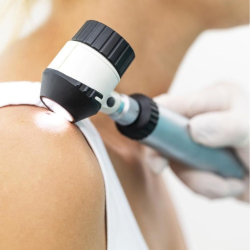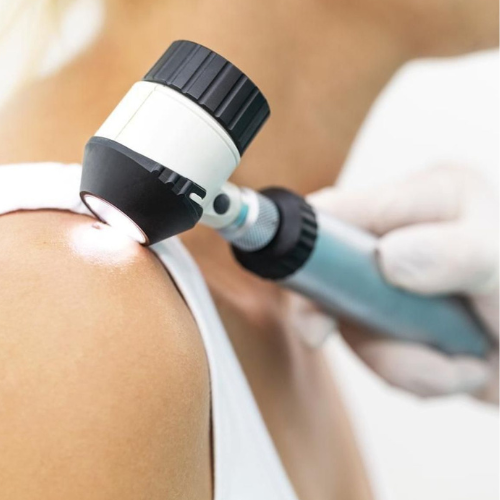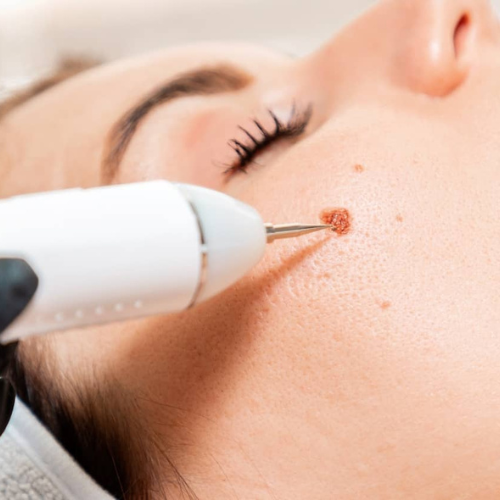REDNESS
As the body's largest organ, the skin plays an essential role in protecting us from external aggressors and regulating various physiological processes. Skin is also a reflection of our overall health, lifestyle and emotional well-being.
Taking care of our skin is therefore crucial to maintaining its health and appearance. This includes adopting a skincare routine tailored to our individual needs, protecting against damage from the sun and external elements, a balanced diet and adequate hydration, as well as stress and lifestyle management.
By investing in healthy skin care habits and consulting health professionals when necessary, we can help preserve our skin's youthfulness and radiance, while promoting our overall well-being.

Rosacea, couperose, erythrosis
Rosacea, couperose and erythrosis are skin conditions that generally affect the face and are characterized by redness, dilated blood vessels and inflammatory lesions. Although they may have similarities, they have distinct characteristics:
- Rosacea: Rosacea is a chronic skin condition characterized by redness, dilated blood vessels (telangiectasias), pimples and sometimes inflammatory nodules on the face. It can also be accompanied by feelings of heat, burning and itching. Rosacea can develop progressively over time, with flare-ups of symptoms that worsen and then improve.
- Couperose: Couperose, also known as telangiectasia, is a skin condition characterized by the dilation of small blood vessels near the surface of the skin, giving the appearance of diffuse redness or red spots on the face. These dilated vessels may be visible as red lines or red spots. Couperose is often associated with rosacea, but can also occur independently.
- Erythrosis: Erythrosis is diffuse skin redness that can be temporary or persistent. They can be triggered by a variety of factors, such as sun exposure, temperature changes, stress, alcohol consumption or certain spicy foods. Unlike rosacea, erythrosis is not necessarily associated with dilated blood vessels or inflammatory lesions.
These conditions can be influenced by genetic, hormonal, environmental and behavioral factors.
OUR SOLUTIONS FOR ROSACEA, COUPEROSE AND ERYTHROSIS
Angiomas are benign vascular anomalies that form when blood vessels or lymphatic vessels develop abnormally. They can appear in a variety of shapes and sizes, and most often occur on or just below the surface of the skin. Angiomas are generally harmless, although they can sometimes cause minor complications such as bleeding or pain, particularly if they are found in sensitive areas or exposed to trauma.
There are several types of angiomas, the most common of which are :
- Plane angioma: Also known as a wine stain, a plane angioma is a red or purplish spot on the surface of the skin. It is usually present from birth and may enlarge over time, but usually remains flat and does not extend beyond the surface of the skin.
- Hemangioma: Hemangiomas are angiomas composed of blood vessels that form a mass or tumor under the skin. They are often present at birth or develop shortly afterwards, and can vary in size and appearance. Hemangiomas may disappear spontaneously over time, but some may require treatment, particularly if they cause complications or affect the functionality of an organ.
- Cavernous angioma: Cavernous angiomas are masses of dilated blood vessels usually found in the deeper layers of the skin or subcutaneous tissue. They may be bluish or purplish in appearance and may be more prone to bleeding than other types of angioma.
- Cherry angioma: Also known as stellate neuroma or stellate angioma, the cherry angioma is a small angioma composed of dilated blood vessels usually found on the face, neck, chest or back. It looks like a small red spot, sometimes with a darker center, and may bleed slightly when scratched or irritated.
Angiomas can be present from birth or develop later in life, and can vary in size, number and appearance.



